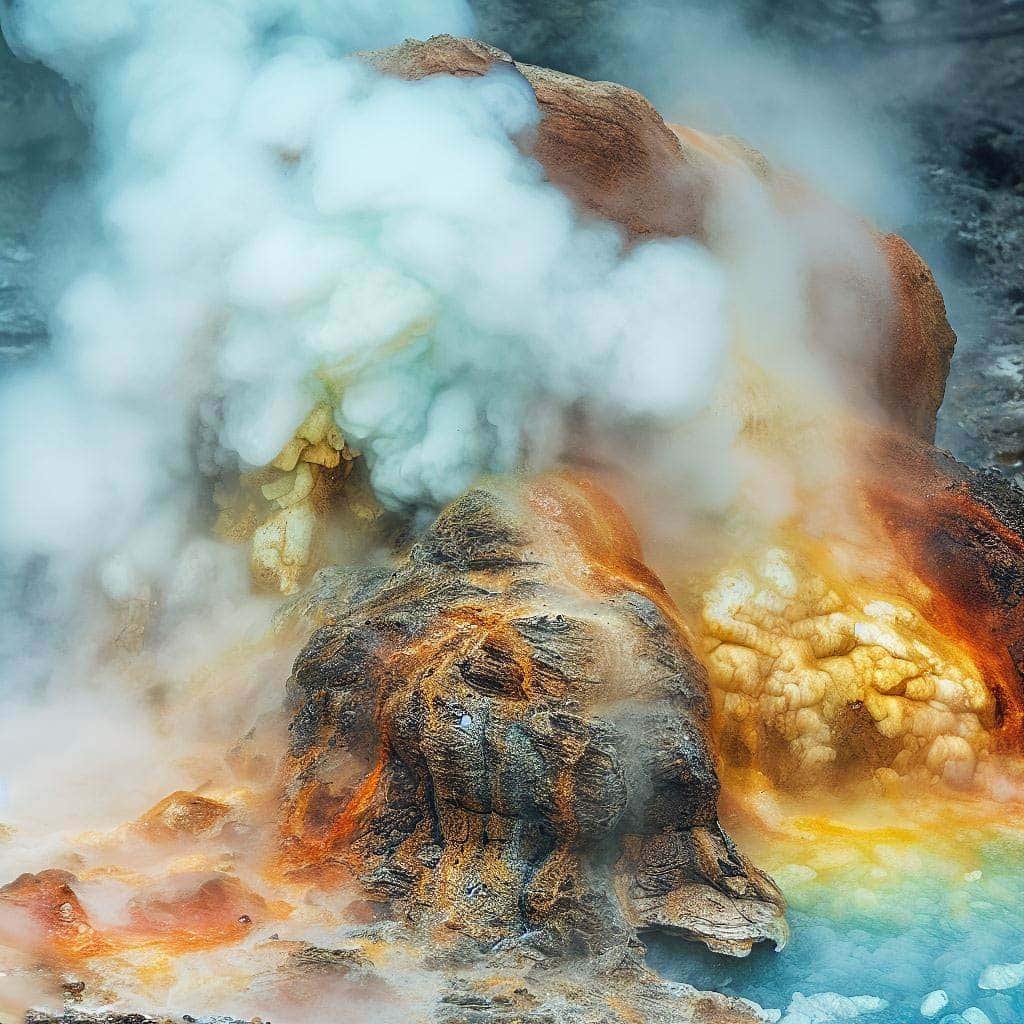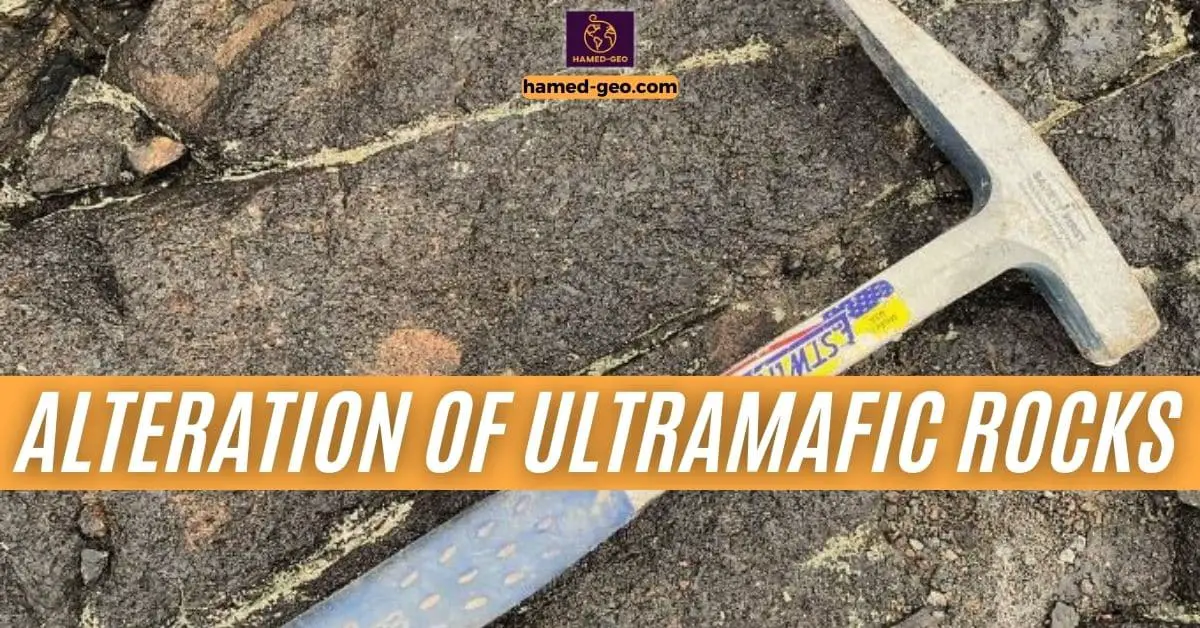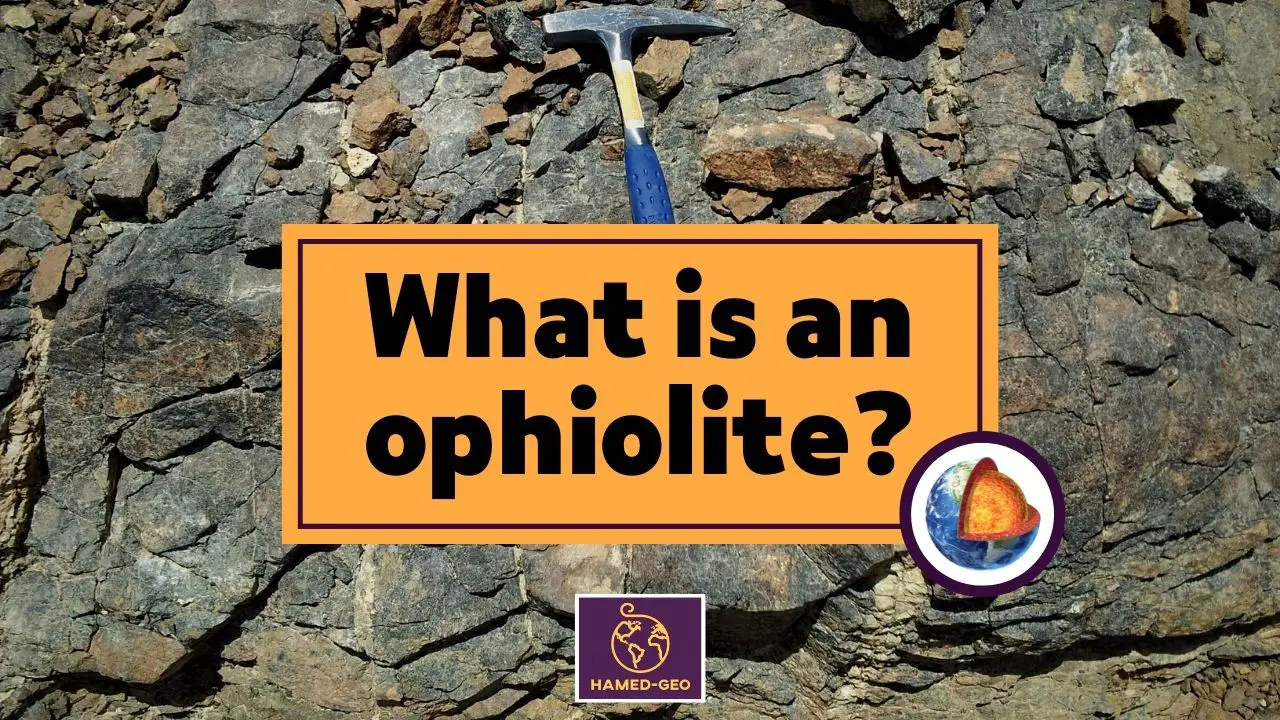Ultramafic rocks are a group of igneous rocks composed mainly of minerals rich in iron and magnesium, such as olivine and pyroxene. These rocks are commonly found in ophiolite complexes, which are fragments of oceanic crust that have been thrust onto land during tectonic processes. The alteration of ultramafic rocks is a complex process that involves the interaction of various fluids with the rock, resulting in changes to the mineralogy and chemistry of the rock. Understanding the alteration of ultramafic rocks is important for a variety of reasons, including mineral exploration and environmental remediation.
One of the most common processes involved in the alteration of ultramafic rocks is serpentinization. Serpentinization occurs when water reacts with the minerals in the rock, converting them into serpentine minerals. Serpentine minerals are hydrated magnesium silicate minerals that are stable at low temperatures and pressures. The process of serpentinization can result in the formation of new minerals, such as magnetite and brucite, as well as the release of hydrogen gas. The alteration of ultramafic rocks can also result in the release of metals and metalloids, such as nickel, cobalt, and arsenic, which can have implications for mineral exploration and environmental contamination.
Overview of Ultramafic Rocks
Ultramafic rocks are igneous rocks composed primarily of minerals containing iron and magnesium. The composition of these rocks is dominated by olivine and pyroxene, and they typically have low silica content. Properties of ultramafic rocks include high density, hardness, and resistance to weathering.
Ultramafic rocks are found in a variety of geological settings, including ophiolites, continental margins, and deep mantle rocks. Their occurrence is often associated with the formation of oceanic crust and the process of subduction. Despite their relative rarity on the Earth’s surface, ultramafic rocks play an important role in the formation and evolution of the planet.
Composition of Ultramafic Rocks
Moving on to the composition of Ultramafic Rocks, it is important to note that these rocks are primarily composed of mafic minerals, such as olivine, pyroxene, and amphibole. Mafic minerals are those that are rich in iron and magnesium and have a relatively low silica content. This is in contrast to felsic minerals, which are rich in silica and have a lower proportion of iron and magnesium.
Olivine is the most abundant mineral in Ultramafic Rocks, accounting for up to 70% of the rock’s composition. It is a green mineral that is commonly found in volcanic rocks and is known for its high melting point. Pyroxene is another common mineral in Ultramafic Rocks, and it can have a range of colors from green to black. Amphibole is less common in Ultramafic Rocks, but it can also be present in small amounts.
One important feature of Ultramafic Rocks is their high density, which is due to the presence of these dense mafic minerals. In addition, Ultramafic Rocks are often associated with other types of rocks, such as mafic igneous rocks and serpentinite. Mafic igneous rocks, like basalt and gabbro, also contain mafic minerals and are often found in the same geologic settings as Ultramafic Rocks. Serpentinite is a rock that forms when Ultramafic Rocks are altered by water and other fluids, resulting in the formation of serpentine minerals.
Properties of Ultramafic Rocks
To gain a better understanding of ultramafic rocks, it is important to examine their properties. Ultramafic rocks are primarily composed of minerals rich in magnesium and iron, such as olivine, pyroxene, and amphibole. These minerals give ultramafic rocks their unique physical and chemical properties.
One of the most notable properties of ultramafic rocks is their high density. Due to the high concentration of heavy minerals, such as olivine, ultramafic rocks can have densities of up to 3.3 g/cm³, which is significantly higher than the average density of the Earth’s crust. Additionally, ultramafic rocks have low silica content and high magnesium-to-iron ratios, which make them resistant to weathering and erosion.
Another important property of ultramafic rocks is their ability to host valuable minerals. Ultramafic rocks are known to contain significant deposits of chromite, nickel, and platinum-group elements, which are important resources for various industries. In fact, some of the world’s largest nickel and chromite deposits are found in ultramafic rocks.
Occurrence of Ultramafic Rocks
After learning about the composition and properties of ultramafic rocks, it is essential to understand their occurrence. Ultramafic rocks are primarily found in the Earth’s mantle. However, they can also be found at the surface in areas of tectonic activity, such as volcanic arcs, ophiolites, and intrusions.
Volcanic arcs are chains of volcanoes that form near convergent plate boundaries, where oceanic crust subducts beneath the continental crust. As the oceanic crust descends into the mantle, it undergoes intense heat and pressure, causing it to melt and form magma. This magma rises to the surface and cools to form igneous rocks, including ultramafic rocks.
Ophiolites are sections of oceanic crust that have been obducted or pushed onto the continental crust. They often contain ultramafic rocks, such as peridotite and serpentine, which were once part of the Earth’s mantle like Samail ophiolite in Oman.
Lastly, ultramafic intrusions occur when magma intrudes into the Earth’s crust but does not reach the surface. These intrusions can form massive bodies of ultramafic rocks, such as the Bushveld Igneous Complex in South Africa, which is the largest layered intrusion in the world.
Types of Alteration of Ultramafic Rocks
Different types of alteration processes can occur on rocks depending on the environmental conditions. One of the most common types of alteration is hydrothermal alteration, which occurs when hot fluids circulate through rocks and cause chemical reactions that change the composition of the minerals. Another type of alteration is metamorphic alteration, which occurs when rocks are subjected to high pressure and temperatures, causing changes in their texture and mineral composition. Finally, weathering alteration occurs when rocks are exposed to the elements, such as wind, rain, and temperature changes, causing them to break down and chemically alter over time.
Hydrothermal Alteration

Moving on to the various types of alteration, the first one is hydrothermal alteration. Hydrothermal alteration is a process that occurs when hot water, fluids, or gases interact with rocks, leading to chemical and mineralogical changes. These changes occur due to the fluid’s acidity, temperature, and pressure, which can dissolve, transport, and precipitate minerals. The alteration can occur in any rock type, but it is most commonly associated with volcanic rocks and often occurs in areas of active or past volcanic activity.
There are three main types of hydrothermal alteration: propylitic, phyllic, and potassic. Propylitic alteration is the most common type and occurs in the outer parts of the hydrothermal system. The formation of secondary minerals such as chlorite, epidote, and carbonate characterizes it. Phyllic alteration occurs in the inner parts of the hydrothermal system and is characterized by the formation of quartz, sericite, and pyrite. Potassic alteration is the least common type and is characterized by the formation of orthoclase, biotite, and potassium feldspar.
Hydrothermal alteration is an essential process in the formation of valuable mineral deposits. For example, hydrothermal alteration can lead to the formation of gold deposits, where the gold is transported in fluids and deposited in veins within the rock. Understanding the different types of hydrothermal alteration is critical in identifying and locating mineral deposits.
Metamorphic Alteration
After the formation of ultramafic rocks, they undergo various processes that alter their composition and morphology. One of these processes is metamorphic alteration, which occurs due to intense heat and pressure within the Earth’s crust. This process transforms the original ultramafic rock into a new rock with a different mineralogy and texture.
During metamorphic alteration, the minerals within the ultramafic rock recrystallize and reorganize, forming new minerals that are more stable under the new conditions. The intensity of the metamorphic alteration depends on the degree of heat and pressure exerted on the rock. The higher the temperature and pressure, the greater the extent of the alteration. This alteration process can be classified based on the temperature and pressure conditions that were present during the alteration.
One common type of metamorphic alteration is regional metamorphism. This type of alteration occurs over a broad area and is associated with tectonic activity, such as mountain building. Ultramafic rocks that undergo regional metamorphism may be transformed into schist or gneiss. Another type of metamorphic alteration is contact metamorphism. This type occurs when ultramafic rocks come into contact with igneous intrusions, such as magma. The heat from the igneous intrusion causes the ultramafic rock to alter, forming new minerals. Examples of rocks that are formed through contact metamorphism include marble and hornfels.
Weathering Alteration
Moving on to the types of alteration, Ultramafic rocks can undergo three main types of alteration: hydrothermal, metamorphic, and weathering alteration. Weathering alteration is the most common type of alteration that occurs in Ultramafic rocks, and it usually takes place at the earth’s surface.
Weathering alteration is a process that involves the breakdown of rock minerals due to exposure to the earth’s atmospheric conditions. This type of alteration occurs as a result of chemical weathering, which can be caused by a variety of factors, including temperature, moisture, and the presence of certain chemicals in the environment. The weathering of Ultramafic rocks can lead to the formation of various secondary minerals such as serpentinite, talc, and magnetite.
One of the most significant factors that contribute to weathering alteration in Ultramafic rocks is the presence of water. As water seeps into the rock, it reacts with the minerals, causing them to break down into smaller particles. This process can be further accelerated by the presence of acids in the water, which can dissolve some minerals. The resulting weathered Ultramafic rocks can have a different texture, color, and composition, and are often softer and more susceptible to erosion than their unaltered counterparts.
Carbonation
Carbonation is a geological process that occurs when carbon dioxide (CO2) reacts with minerals in the ultramafic rock and forms a group of minerals known as carbonates. Carbonation typically occurs in areas where ultramafic rocks are exposed to atmospheric carbon dioxide, such as in areas of high rainfall or in areas of volcanic activity.
When carbon dioxide dissolves in water, it forms a weak acid known as carbonic acid (H2CO3). This carbonic acid can then react with minerals in ultramafic rock, such as olivine, pyroxene, and serpentine, which are rich in magnesium and iron. The reaction between carbonic acid and these minerals can lead to the formation of new minerals, such as magnesite (MgCO3), siderite (FeCO3), and calcite (CaCO3).
The carbonation process can occur through a number of different pathways. One pathway involves the dissolution of carbon dioxide into groundwater, which then reacts with the minerals in the ultramafic rock. Another pathway involves the direct reaction of carbon dioxide with the minerals in the ultramafic rock at the surface. This can occur in areas of volcanic activity, where carbon dioxide is released from volcanic vents and reacts with the surrounding rocks.
The formation of carbonate minerals through carbonation can have significant effects on the physical and chemical properties of ultramafic rock. Carbonate minerals are typically white or gray in color and have a crystalline texture. They are also more resistant to weathering than the original ultramafic minerals, which can lead to the formation of more stable and durable rock formations over time.
Carbonation can also have significant implications for the Earth’s carbon cycle. The process of carbonation sequesters carbon dioxide from the atmosphere and stores it in the form of carbonate minerals. This can help to mitigate the effects of anthropogenic climate change by reducing the amount of carbon dioxide in the atmosphere.
In conclusion, the alteration of ultramafic rocks is a complex geological process that can lead to significant changes in the composition and structure of these rocks. The two main types of alteration, serpentinization, and carbonation, can have different effects on the physical, chemical, and biological properties of ultramafic rocks. Serpentinization, for example, can create a range of new minerals and increase the porosity of rocks, while carbonation can lead to the formation of carbonate minerals and the release of carbon dioxide.
@meta: Discover the secrets of ultramafic rock alteration and its impact on geological processes.



